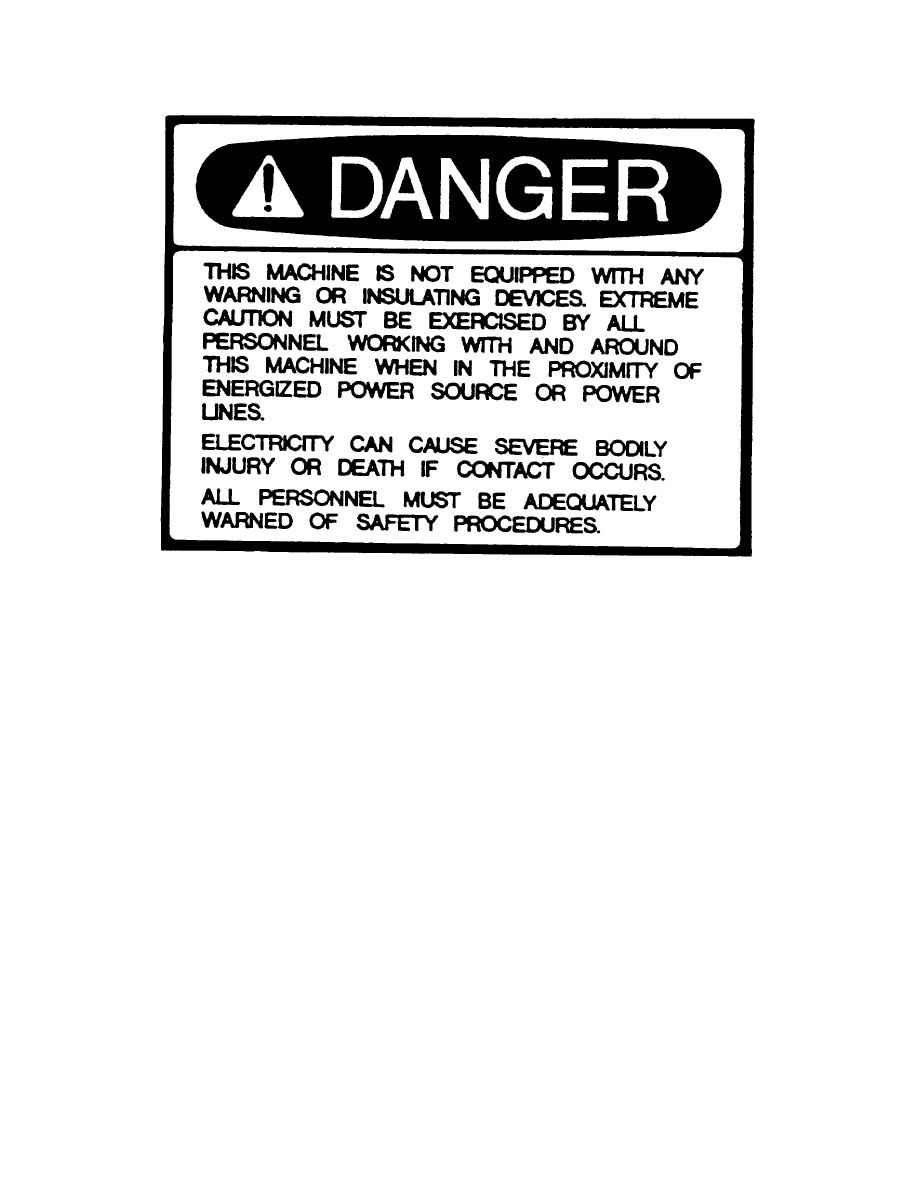
TM 10-3950-672-10
Assume all power sources are electrically energized ("hot" or "live") until you have absolutely reliable information to the
contrary.
When operating in the vicinity of power lines, have the power company cut off the power and ground the lines. Obey the
following rules, at all times whether the power is cut off or not.
Position the crane far enough away from power sources to ensure that no part of the crane or load can reach to within an
unsafe zone. This includes the crane boom (fully extended to maximum height, radius, and length) and all attachments
(jibs, boom extensions, rigging, tag lines, etc.).
Erect a suitable barricade to physically restrain the crane and all attachments (including the load) from entering into an
unsafe distance from the power source.
Obtain positive and absolute assurance that power has been turned OFF.
Anytime there is the possibility of the boom or any part of the crane coming in contact with or close proximity of any
overhead electrical lines, cables, or other obstructions such as bridges, gantries, pipework, scaffolding, or buildings, the
crane operator must work under the direction of a single person so positioned to have a clear and unobstructed view of
the work area. The observer must observe for adequate clearances, and stop craning operations anytime adequate
clearances are not available.
When working near overhead electrical lines or cables, the crane frame must be positioned no closer (to the vertical
plumb line of the nearest cable) than a distance equal to the maximum main boom and jib length plus 20 ft (6 m) as
measured along the ground. If it should become necessary to work within this area, the electrical power company should
be notified before work is begun.
2-19




